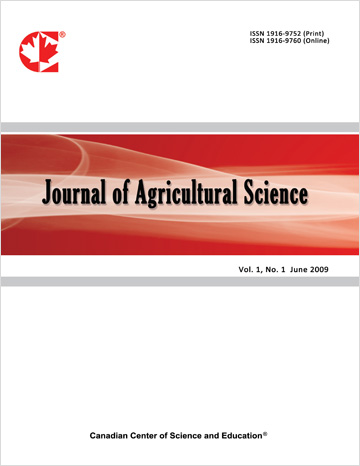Contraceptive Potential of Ipomoea asarifolia Aqueous Leaf Extracts in Female Wistar Rats as an Alternative Approach to Rodent Pest Management in Agriculture
- Hafiz Ayinde Badmus
- Mustapha Olawuni
- Bilal Oyeniran Abdulrasaq
Abstract
Combined pre- and post-harvest loss in agricultural production accounts for about 40% in Africa with rodent contributing significant damage causing severe economic impact to farmers. This study explores whether Ipomoea asarifolia has contraceptive effects in female Wistar rats as a method of control of rodent pest depredating agricultural produce, by reducing their fertility. The impact of the aqueous leaf extract was assessed on fertility hormones, ovarian structure, and overall physiology in the rat. Forty-five female rats were divided into three groups: a control group and two experimental groups fed with diets containing 200 g/kg and 400 g/kg of I. asarifolia extract for 21 days. Various parameters, including body weight, feed intake, blood composition, hormone levels, and ovarian tissue structure, were analyzed. The results showed no significant changes in body weight or food consumption across the groups (p > 0.05). While some minor variations were observed in haematological and biochemical markers, they were largely insignificant, except for a slight increase in creatinine levels and a decrease in aspartate aminotransferase, which may indicate mild renal and antioxidant effects. Hormonal analysis revealed no substantial changes in luteinizing hormone (LH), follicle-stimulating hormone (FSH), progesterone, or oestrogen levels (p > 0.05). Histological examination of the ovaries showed some degenerative changes in the group that received the lower dosage, but no abnormalities in the higher dosage group. These findings suggest that I. asarifolia does not have a significant contraceptive effect in female rats within the duration of the study. However, further research using higher doses and longer exposure periods is needed to fully understand its potential anti-reproductive effects.
- Full Text:
 PDF
PDF
- DOI:10.5539/jas.v17n8p117
Journal Metrics
- h-index: 67
- i10-index: 839
- WJCI (2023): 0.884
- WJCI Impact Factor (2023): 0.196
Index
- AGRICOLA
- AGRIS
- BASE (Bielefeld Academic Search Engine)
- Berkeley Library
- CAB Abstracts
- ChronosHub
- CiteSeerx
- CNKI Scholar
- Copyright Clearance Center
- CrossRef
- DESY Publication Database
- DTU Library
- e-Library
- EBSCOhost
- EconPapers
- Elektronische Zeitschriftenbibliothek (EZB)
- EuroPub Database
- Excellence in Research for Australia (ERA)
- Google Scholar
- Harvard Library
- IDEAS
- iDiscover
- Jisc Library Hub Discover
- JournalTOCs
- KindCongress
- LIVIVO (ZB MED)
- LOCKSS
- Max Planck Institutes
- Mendeley
- MIAR
- Mir@bel
- NLM Catalog PubMed
- Norwegian Centre for Research Data (NSD)
- Open J-Gate
- OUCI
- PKP Open Archives Harvester
- Polska Bibliografia Naukowa
- Qualis/CAPES
- RefSeek
- RePEc
- ROAD
- ScienceOpen
- Scilit
- SCiNiTO
- Semantic Scholar
- SHERPA/RoMEO
- Southwest-German Union Catalogue
- Standard Periodical Directory
- Stanford Libraries
- SUDOC
- Swisscovery
- Technische Informationsbibliothek (TIB)
- Trove
- UCR Library
- Ulrich's
- UniCat
- Universe Digital Library
- WorldCat
- WRLC Catalog
- Zeitschriften Daten Bank (ZDB)
Contact
- Anne BrownEditorial Assistant
- jas@ccsenet.org
